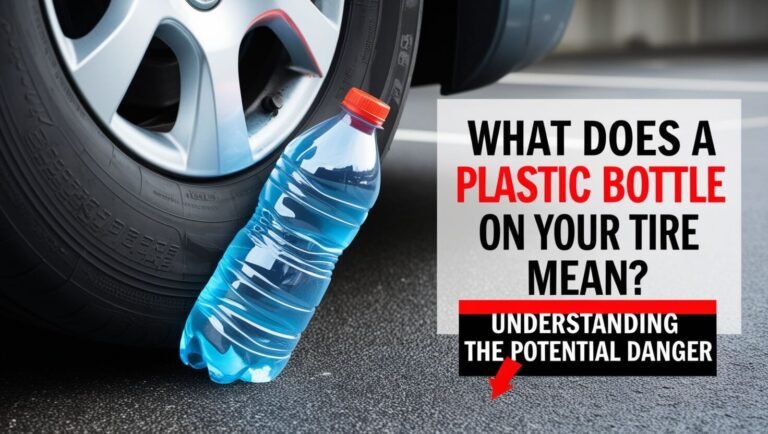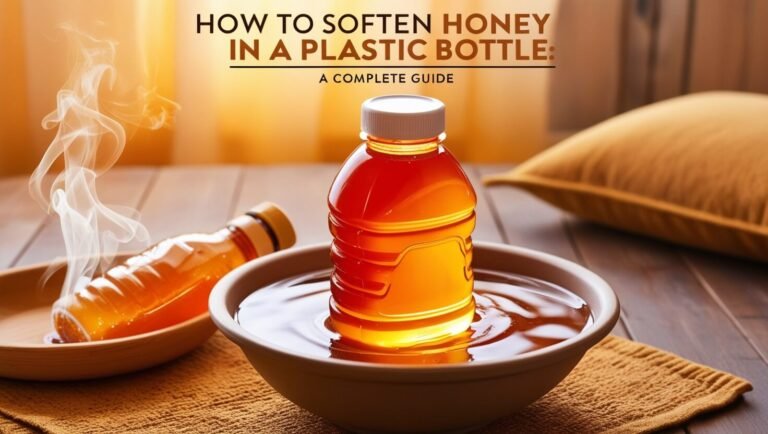Why Put a Plastic Bottle on Your Tire: Unconventional Uses and Safety Concerns

Have you ever wondered why someone might put a plastic bottle on their tire? This unusual practice has gained attention recently, sparking curiosity and concern among drivers. While some claim it offers benefits, others warn of potential dangers. Let’s dive into the facts behind this trend and explore what you really need to know about tire safety and maintenance.
Introduction: The Plastic Bottle Tire Trend
What’s behind this unusual practice?
The idea of placing a plastic bottle on a tire has circulated online and through word-of-mouth. Proponents suggest various reasons for this unconventional method, ranging from DIY solutions to potential safety measures. However, it’s crucial to separate fact from fiction when it comes to your vehicle’s well-being.
Safety considerations and misconceptions
Before adopting any new practice with your car, it’s essential to consider the safety implications. While some ideas may seem clever at first glance, they could potentially compromise your vehicle’s performance or even put you at risk on the road.
Potential Benefits of Placing Bottles on Tires
DIY tire pressure indicators
One suggested use for plastic bottles on tires is as a makeshift pressure indicator. The theory is that a properly inflated tire will compress the bottle in a specific way, alerting the driver to potential pressure issues. However, this method is far from reliable and shouldn’t replace regular pressure checks with a proper gauge.
Makeshift traction devices for snow and mud
Some drivers claim that attaching cut plastic bottles to tires can provide extra traction in slippery conditions. While this might offer a temporary solution in an emergency, it’s not a safe or effective long-term strategy for dealing with challenging road conditions.
Temporary leak detection method
Another proposed use involves using a water-filled bottle to identify slow leaks. By pouring water over the tire and looking for bubbles, you might spot a small puncture. However, this method is messy and less effective than professional leak detection techniques.
Safety Concerns and Risks
Potential damage to tires and wheels
Attaching foreign objects to your tires can cause damage to the rubber, potentially leading to blowouts or accelerated wear. The risk of a bottle coming loose while driving also poses a significant hazard to you and other motorists.
Distraction while driving
Checking on bottles attached to your tires while driving is dangerous and takes your attention away from the road. Any maintenance or inspection should be done when the vehicle is safely parked.
False sense of security
Relying on homemade solutions like plastic bottles might give drivers a false sense of security about their tire condition. This could lead to neglecting proper maintenance and overlooking genuine safety issues.
Urban Legends and Misinformation
The carjacking myth debunked
One widely circulated story claims that criminals place water bottles on tires as part of a carjacking scheme. This urban legend has been debunked by law enforcement agencies, who stress that there’s no evidence to support such claims.
Misunderstandings about tire maintenance
Many DIY tire tricks, including the bottle method, stem from misunderstandings about proper tire care. It’s important to rely on factual information from automotive experts rather than unverified online tips.
Alternative Uses for Plastic Bottles in Vehicle Maintenance
Eco-friendly DIY car accessories
While putting bottles on tires isn’t recommended, there are safer ways to repurpose plastic bottles for your car. For example, you can create organizers for small items or use them to store emergency supplies.
Repurposing bottles for storage solutions
Plastic bottles can be cut and shaped into useful storage containers for your garage or workshop, helping you organize tools and small parts used in car maintenance.
Proper Tire Maintenance Practices
Regular pressure checks and inflation
Instead of relying on makeshift indicators, use a quality tire pressure gauge to check your tires regularly. Proper inflation is crucial for safety, fuel efficiency, and tire longevity.
Rotation and alignment importance
Regular tire rotations and wheel alignments help ensure even wear and optimal performance. These services should be performed by professionals according to your vehicle manufacturer’s recommendations.
When to replace your tires
Understanding the signs of tire wear and knowing when to replace your tires is essential for safety. Look for indicators like tread depth, uneven wear patterns, and age of the tire.
Environmental Impact of Plastic Bottles
The plastic waste problem
While repurposing plastic bottles might seem eco-friendly, it’s important to consider the broader impact of single-use plastics. Proper recycling is generally a better option than using bottles for unconventional purposes.
Recycling and upcycling initiatives
Many communities offer recycling programs for plastic bottles. Additionally, there are creative upcycling projects that can give new life to plastic waste without compromising vehicle safety.
Legal and Insurance Implications
Potential violations of traffic laws
Modifying your vehicle with plastic bottles or other non-standard additions could violate traffic laws in some areas. Always check local regulations before making any changes to your car.
Insurance coverage concerns
Using non-approved modifications on your vehicle could potentially affect your insurance coverage. It’s best to consult with your insurance provider before implementing any unconventional practices.
Expert Opinions on the Bottle-on-Tire Trend
Automotive specialists weigh in
Professional mechanics and automotive experts overwhelmingly advise against putting plastic bottles on tires. They emphasize the importance of proper maintenance and using tools designed specifically for tire care.
Tire manufacturer perspectives
Tire companies invest heavily in research and development to create safe, reliable products. They strongly recommend following their guidelines for tire care and maintenance rather than relying on homemade solutions.
Safer Alternatives to Bottle Usage
Professional tire pressure monitoring systems
Many modern vehicles come equipped with tire pressure monitoring systems (TPMS). For older cars, aftermarket TPMS devices provide a safe and reliable way to keep track of tire pressure.
Proper emergency equipment for vehicles
Instead of improvising with plastic bottles, equip your car with proper emergency tools. This includes a spare tire, jack, tire iron, and perhaps a portable air compressor for on-the-go inflation.
The Psychology Behind Viral Car “Hacks”
Why unconventional tips spread quickly
The appeal of quick, easy solutions often leads to the rapid spread of unverified car maintenance tips. People are drawn to the idea of saving money or solving problems with household items.
Critical thinking in the age of social media
It’s crucial to approach viral car tips with skepticism. Always verify information with reliable sources before trying new methods on your vehicle.
Final Thoughts: Separating Fact from Fiction in Car Care
The importance of reliable information
When it comes to vehicle maintenance, relying on proven methods and expert advice is always the safest choice. Avoid risky trends and focus on established care practices.
Responsible vehicle maintenance practices
Regular professional maintenance, coupled with informed DIY care, is the best way to ensure your vehicle’s longevity and safety. Stick to manufacturer recommendations and consult with certified mechanics for the best results.
In conclusion, while the idea of putting a plastic bottle on your tire might seem innovative, it’s not a practice recommended by automotive experts. Instead, focus on proper tire maintenance, regular inspections, and using appropriate tools and techniques to keep your vehicle safe and running smoothly. Remember, when it comes to your safety on the road, it’s always better to rely on proven methods rather than unconventional hacks.






